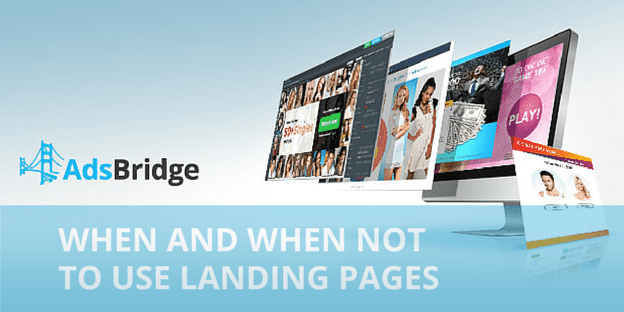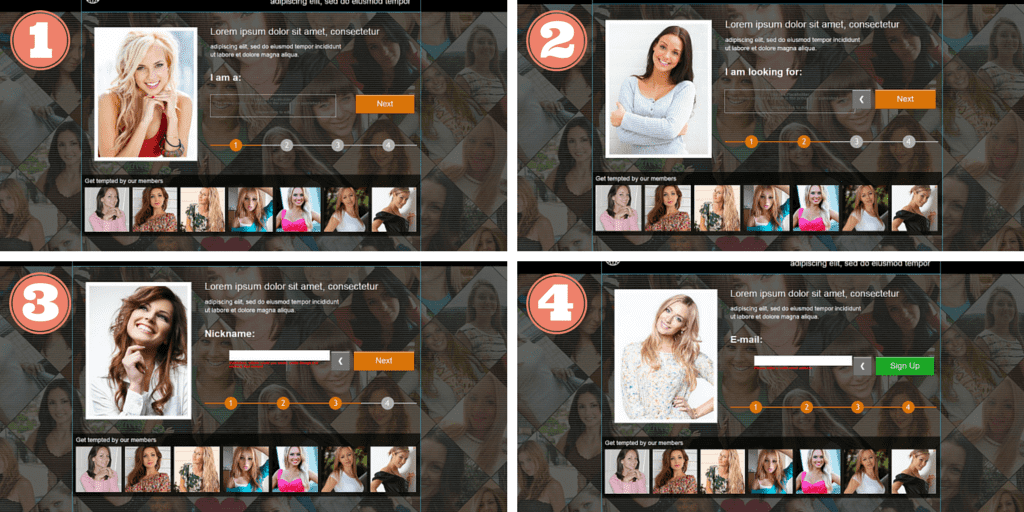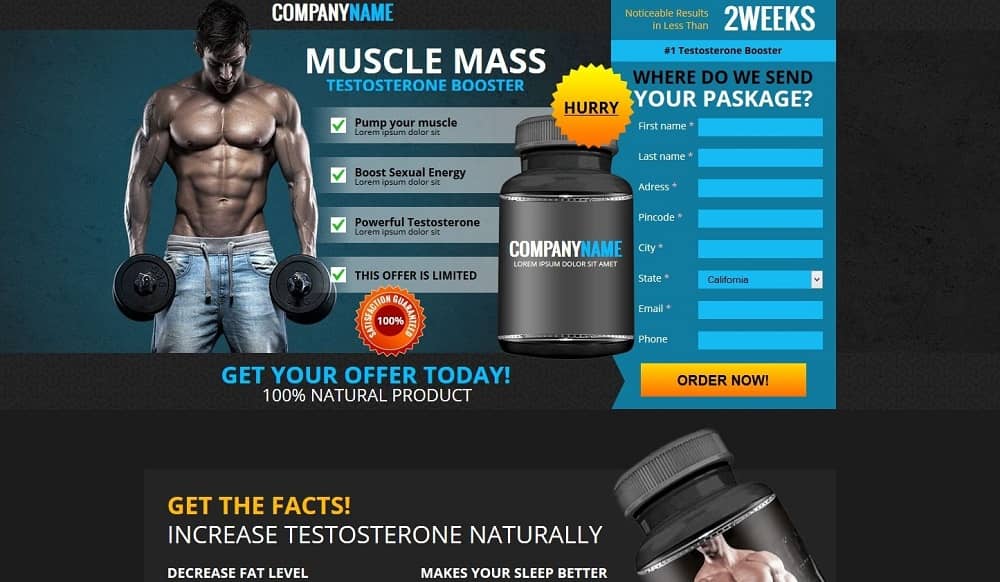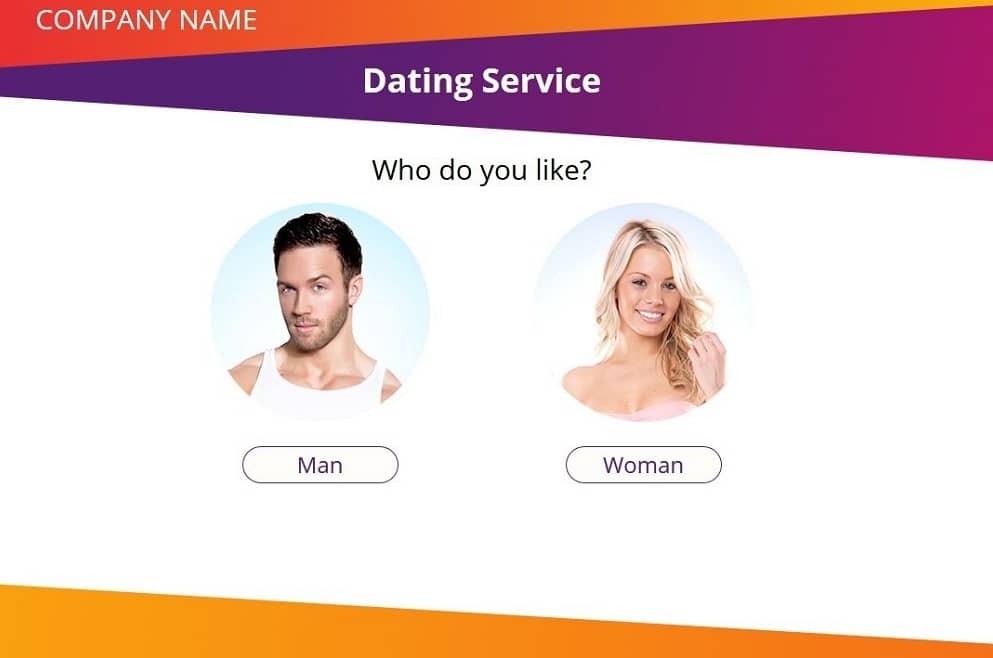When creating a landing page for your online lead generation, it’s important to make sure a landing page is actually required. In most cases, you are going to want to use a landing page and split test your results… however, this isn’t always the case. In this article we are going to break down the key factors in deciding when to use a landing page and when not to.
Since we’ve already covered the basics of landing pages creation, optimization and setup in previous articles, we are going to jump right into the meat of this article.
When To Use a Landing Page
Landing pages are used as a pre-sell page to warm up and relate with your audience before sending them to a registration or checkout page. With most affiliate marketers promoting ad campaigns that aren’t their own, it’s almost always necessary to create a landing page, as many ad networks and traffic sources won’t allow you to direct link to affiliate links. While this is important to know, it’s still not the only reason to use landing pages in your affiliate marketing efforts.
Special Promotions, Coupons and Discounts
One of the most widely used reasons for having a landing page, is when attempting to promote an offer that wouldn’t be targeted to your general audience. For example, if you had a web site that was selling shoes and you wanted to send out a special mailing to all of your members and offer them a unique coupon code on their next purchase, the best way to do this would be through a unique landing page.
By creating a specific landing page and offering a unique code (for a special discount) to your existing mailing list subscribers, you could effectively track how many users the mailing was sent out to, how many clicks the link received and also how many subscribers went on to make a purchase as a result of the mailing — all of which comes back to your unique landing page that was setup only for this special mailing.
Sending Traffic to Your Main Page vs. a Landing Page
While the main page of your web site or online store might be where the majority of your traffic are being sent, it might not be the best way to convert your audience into leads and sales. This is especially true when using any form of paid advertising.
For instance, in the example above we made a reference to selling shoes online. If you wanted to advertise in the search engines and pay to appear at the top of the search results, you would likely see a much better return on your advertising dollars if you built campaigns and landing pages around specific brands and types of shoes, versus going after a generic audience.
In short, a landing page can give your audience exactly what they are looking for, versus sending them to the main page of your site and giving them too many options. This also ties back into the importance of making your call-to-action as simple as possible and removing distractions from your lead generation.
Traffic Source Segmentation
Knowing where your audience is coming from and providing them with just the right amount of advertising and messaging is key. For example… someone coming to your site through a search listing probably has a good idea of what to expect when on your site and they already know what they are looking for. However, if that same customer came to your site through a social media link that someone shared or referenced, they might not be a targeted of a visitor. For organic and generic traffic, this might not be a huge deal. With paid traffic, it’s an absolute requirement.
This is why landing pages are extremely important when dealing with multiple traffic sources.. When creating ad campaigns, you need to build out separate landing pages to track all aspects of your page, such as targeting traffic based on geographic location, mobile devices and different browsers being used, and most importantly… when you are scaling out your ad copy and traffic based on niche and demographic audiences (difference pages for male/female audiences).
When Not to Use a Landing Page
Now that you have a good understanding of why landing pages and their tracking capabilities are the difference between success and failure, we also want to point out the rare occasions when a landing page isn’t necessarily required.
As mentioned earlier, most traffic sources require a landing page… however some do not. These “other” traffic sources include media buying (banners and pop-unders), mobile ads, second-tier search (7Search) and some social networks. But remember, just because they allow you to direct link, only do so when the opportunity is right.
In the affiliate marketing space there are many different lead gen offers to choose from. Many of the higher payout offers and ones that require a lot of information should always have a unique landing page created for them. Lower paying affiliate offers like one-click software installs, email / zip submits and short lead generation forms (like gaming or community sites) may convert higher when sending traffic directly to their advertiser page.
The reason behind this is that most of these affiliate offers and landing pages were already built and optimized to convert. The other reason is that they are usually quick impulse decisions — meaning the person either wants to download something, play a game or enter their email / zip info, or they don’t.
Even with that being said, affiliates are always coming up with new and creative ways to target their audience and create custom landing pages for these low end offers. That is why split testing is always key.
Always Split Test Your Landing Pages and Results
Whether you are using a landing page or direct linking, split testing and tracking your results are a requirement to finding longterm success with affiliate marketing. Not only must you track where your leads are coming from and what offers are converting, you must also know how to continually optimize and split test your landing pages for maximum results.
This is a process that takes time to master, which is why we created the AdsBridge platform. Instead of trying to figure out all of the different landing page builders and tracking solutions out there, our platform makes it easy for affiliates to choose an affiliate offer, create a landing page, track results and analyze their data to make improvements and see continued profits.





Thank you for talking about when NOT to use a landing page! These days it seems like everyone is using quick set up landing pages for everything.under.the.sun and most of them are vague and uninformative about why they want to enter your email address on the page. They’re kind of annoying when you come across them to be honest :-p
Your style is really unique in comparison to other folks I’ve read stuff from.
Thank you for posting when you’ve got the opportunity, Guess I’ll just bookmark this page.